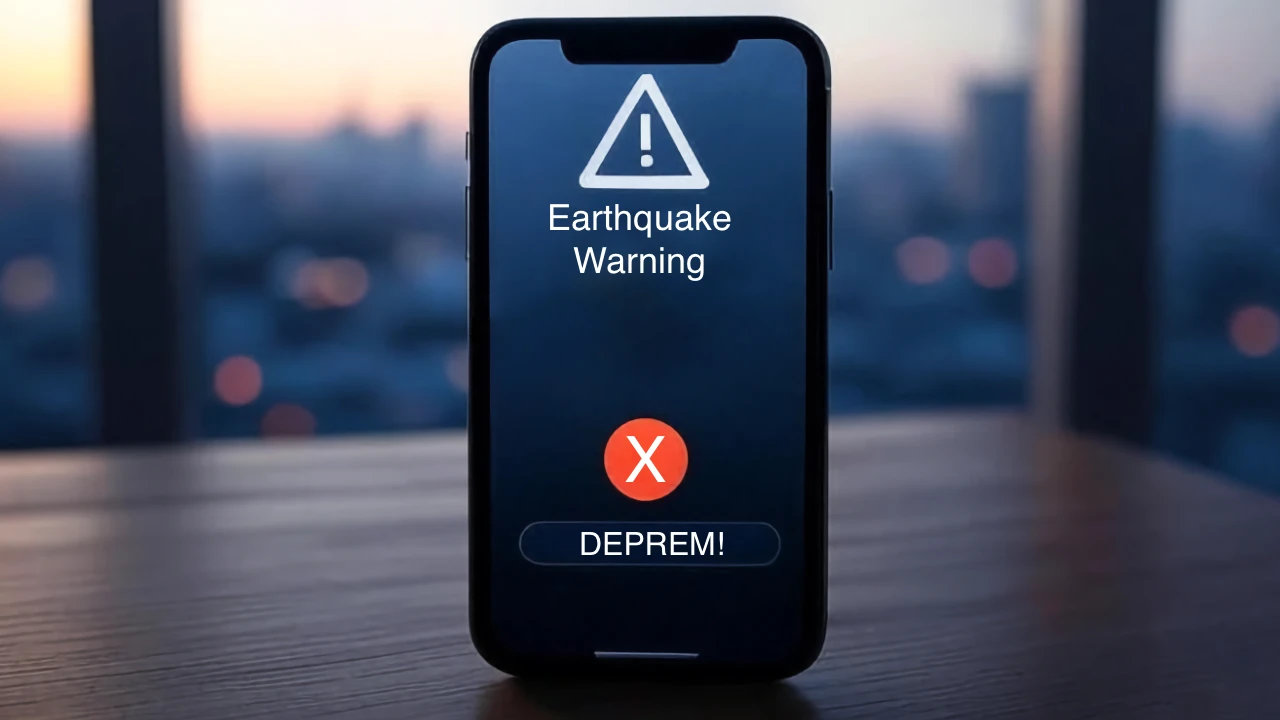In a country like Turkey, located on active fault lines and facing the constant risk of a major earthquake, technology is becoming one of the most crucial life-saving tools. Android phones send users seconds-ahead notifications thanks to Google’s crowdsourced earthquake warning system. However, millions of iPhone users are questioning why Apple doesn’t offer a similar service in Turkey.
Why didn’t the iPhone warn about an earthquake? What’s the difference with Android?
The underlying issue lies in the fundamental differences between Apple and Google’s earthquake warning systems.
Google’s System (Android)
Google operates its Android Earthquake Warning System using two primary methods. The first, like Apple, is to integrate with official earthquake warning networks. The second, and more common, method is to use crowdsourcing. This method uses the accelerometers of millions of Android phones worldwide as mini seismographs. Phones that sense the P wave, the first wave of an earthquake, immediately transmit this data to Google servers. The system analyzes data from thousands of phones to determine the epicenter and magnitude of an earthquake within seconds. It then sends a “Trembling Expected” alert to other users within its radius. Because this model is not directly dependent on official government infrastructure, it can be actively used in many countries, including Turkey.
Apple’s System (iOS)
Apple, however, follows a different policy. The company does not use crowdsourcing for earthquake warnings. Instead, it integrates only with early warning systems provided by official government institutions in its country. For example, it collaborates with ShakeAlert in the US and the Emergency Earthquake Warning (EEW) system of the Japan Meteorological Agency in Japan. These systems must provide data flow at the specific technical standards and speeds Apple requires for integration.
The Situation in Turkey: Is the Obstacle Technical or Bureaucratic?
Turkey has highly competent institutions such as AFAD (Disaster and Emergency Management Presidency) and the Kandilli Observatory. Work continues on early warning systems like the HAYAT (Receiving and Disseminating News) Project developed by AFAD. Notifications are also sent through the “AFAD Emergency” mobile app.
However, experts suggest that the obstacle to Apple’s system’s implementation in Turkey may be the fact that the existing national early warning infrastructure does not fully comply with Apple’s global integration standards. Furthermore, it’s possible that the two parties haven’t yet finalized a formal collaboration to ensure this integration. In other words, the problem isn’t the lack of a warning system in Turkey; it’s that the technical and bureaucratic steps necessary to integrate it into Apple’s closed ecosystem haven’t yet been taken.
Until Apple’s official system is available, iPhone users have no alternatives. Experts recommend that all smartphone users take the following steps:
AFAD Emergency App: Download AFAD’s official mobile app and always enable location permissions.
Kandilli Observatory App: Follow the Kandilli Observatory and Earthquake Research Institute’s mobile app.
Third-Party Applications: Use trusted applications like LastQuake, developed by international seismology centers (e.g., EMSC).
This crucial feature, which affects the safety of millions of citizens, needs to be added to iPhones in Turkey as soon as possible. Therefore, the public’s greatest expectation remains the acceleration of the necessary collaboration between Apple and the relevant authorities in Turkey.



 Shiftdelete.net
Shiftdelete.net









